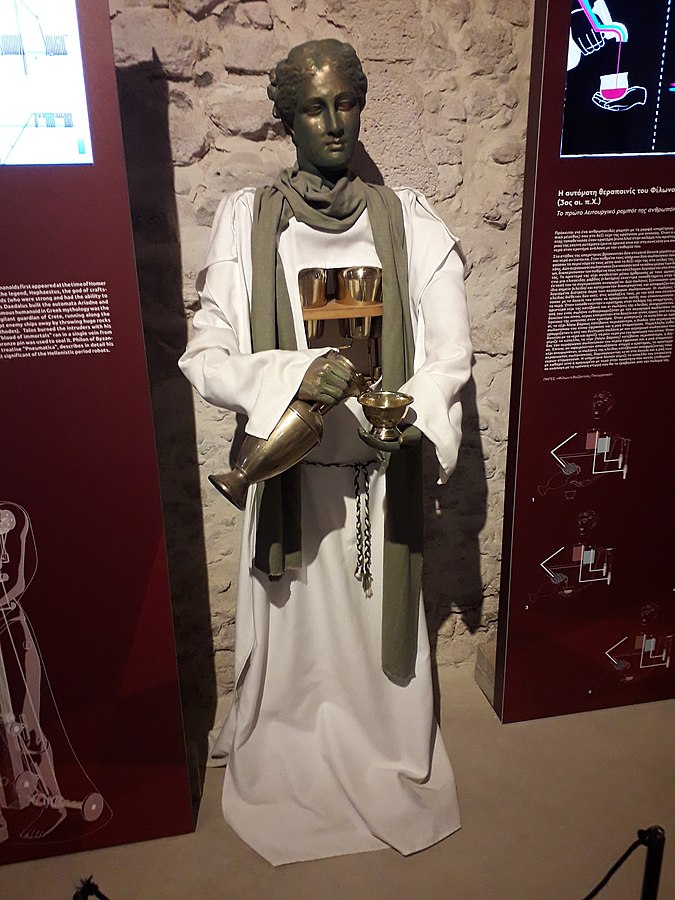A Robot in the Ancient World
The Mechanical Handmaiden of Philo of Byzantium

Mechanical Handmaiden of Philo of Byzantium - Kotsanas Museum of Ancient Technology, Athens - wikimedia commons
In Hellenistic Alexandria, culture was at the heart of daily life. Scholars from across the ancient world flocked here to pursue their studies and share their knowledge. Among them were inventors, known at the time as mechanics, who, thanks to their expertise in engineering, mathematics, geometry, and mechanics, devised all kinds of contraptions. One of the most renowned mechanics was Philo, who lived between the 3rd and 2nd centuries B.C. Originally from Byzantium, he moved to Alexandria and later to Rhodes, where he composed his most famous work, the Treatise on Mechanics. Though much of this work has been lost, it survives indirectly through the writings of his colleague, Hero of Alexandria, and in an Arabic translation.
Despite Philo's passion for military art, which led him to design numerous war machines, one particular device stood out among his creations: an automaton that served wine and water. This so-called "mechanical maid" was a humanoid figure that, through a complex system of weights, hydraulic pressure, and springs, could walk and pour wine and water for guests. Mounted on a wooden, wheeled base, it moved its legs, which were driven by a mechanism activated by the shifting of dried beans contained within a hidden cavity above the wooden support. The wine and water were dispensed through a pressure device: the maid held a jug in her right hand with two small holes from which the liquids flowed, while in her left, empty hand, the container was placed. The weight of the container activated the internal mechanism, opening the valves for the wine and water, which, through two small tubes, flowed from the jug into the container. To stop the flow, one simply needed to remove the container from the maid's hand, and the process was complete. The maid was then ready to serve another guest.
The mechanical maid was one of the most curious inventions of antiquity and perhaps one of the first robots ever created. It became one of the most surprising attractions at the banquets of wealthy families.
- G., Di Pasquale, Tecnologia e meccanica. Trasmissione dei saperi tecnici dall’età ellenistica al mondo romano, Olshki, Florence, 2004.
- F., D., Prager, Philo of Byzantium, Pneumatica: the first treatise on experimental physics, western version and eastern version, Reichert Verlag, Wiesbaden, 1974.
Scarpato Deborah - Master's student - Ca' Foscari University of Venice
2025-02-14
Salvatore Ciccarello
